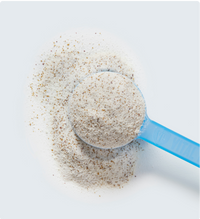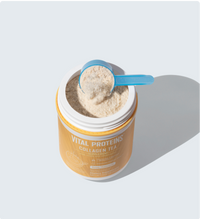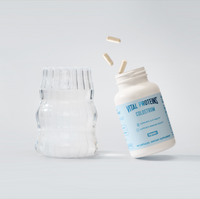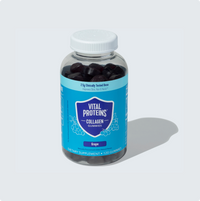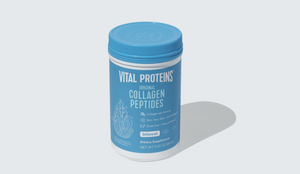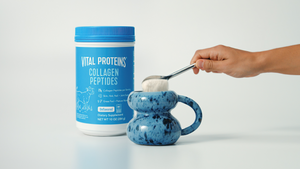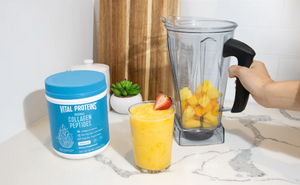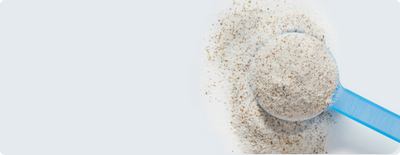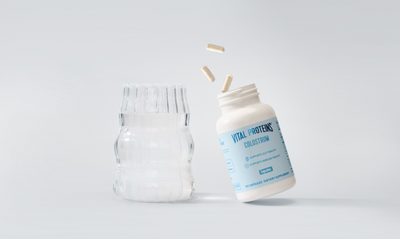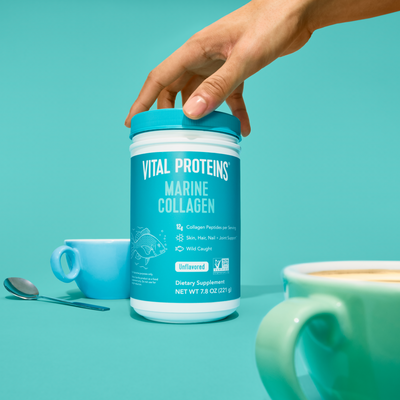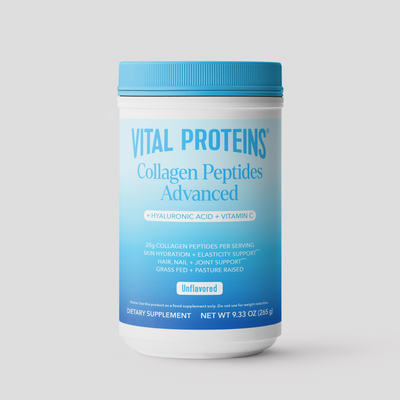Tom Smurr is a member of Vital Proteins Customer Advocate Team. In this weekly blog series, Tom (@triathletetommy on Instagram!) offers an inside look at his journey to the paratriathlon.
I still think about the progress I’ve made to get to this point. Not even five months ago, I had never run before in my life. Not even 14 months ago did the thought of being able to run cross my mind. I was in the boat of owning my disability, sure, but wanting so much more.
After meeting and garnering the support of the genius Dr. David Rotter and the Dare2Tri team, I felt it necessary to embark on this running adventure. The advancements in prosthetics have really hit a stride. My unique disability (missing the top half of my femur) required a very individualized prosthetic. Being in my own category of disability meant we’d all be exploring together.
RELATED: How I Used Collagen to Run on New Legs (Literally)
I received a walking prosthetic before the running prosthetic (yes, they are very different). This had me working on being on my feet more and slowly building endurance. The walking leg allowed more comfort as well. When I received the running leg, I found it fitting much more tightly, and more so built for power – not comfort. This allowed me to fully come down on the leg without pressuring the leg in a painful manner.

Training for the Paratriathlon: My Running Experience
At first, I couldn’t run much. I had no stability through my hips and next to no stamina to last more than 50 meters. Because my hip is affected by the disability, swaying to the left and right was an issue. I started practicing running in place with squats in between. Since my core and hips became a major area to focus on, I found that prone donkey kicks, clam shells, planks, and side leg lifts became necessary to work on in between runs.
In short spurts, I began to be able to jog for 100 meters at a time. More important to me was form than anything else. My coaching staff would help me in swaying my arms more appropriately or placing my foot down in the right spot. When I would engage my core, the run became easier. Now, my running workouts typically include a circular track indoors or outdoors where I warm up with dynamic stretching for at least 10 minutes. Then I will run or jog short sprints up to 100 meters at a time while walking in between to catch my breath and continue engaging my core and hips. These simple and short workouts go a long way!
RELATED: Training for the Paratriathlon: Mastering the Bike Ride
A regular high-calorie diet is what is needed for triathlon training in general. Most of the time I do not eat too much before a run because of the GI distress I can experience. So, I like to focus on what I eat after a good run. Because of the rubbing/bouncing on a very underdeveloped leg wearing a prosthetic, I find that having a serving of collagen is incredibly important. My favorite recovery after a morning run would be 1 cup of steel cut oats with 1 tablespoon of butter, 1 tablespoon of peanut butter, and 1 scoop of Vital Proteins Collagen Peptides. I definitely make sure to chug some water, too!
As I’ve learned, running is going to be a long journey. Starting to run at 30 years old is not supposed to be easy. Having fun with things and trying to practice as regularly as possible is what’s most important. Luckily, with triathlon training, all the components help in strengthening my core and legs like I need.

